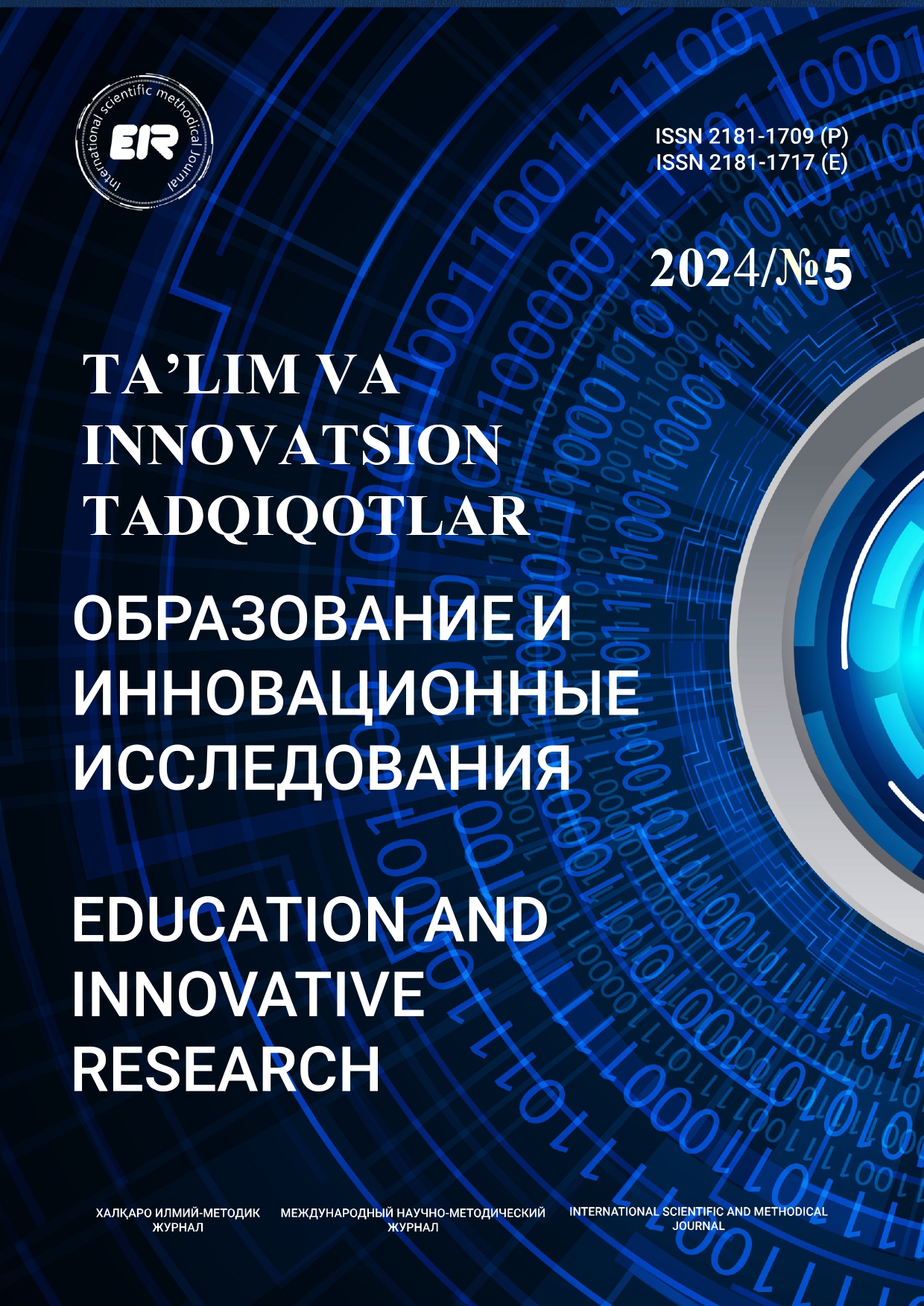THE ESSENCE OF THE CONCEPT OF ARTIFICIAL INTELLIGENCE, DESCRIPTION AND POSSIBILITIES OF APPLICATION IN THE PROCESS OF TEACHING PHYSICS
Mustafoyev O‘tkirjon Rustamovich Basic doctoral student of Bukhara State Pedagogical Institute
Keywords:
physics course, artificial intelligence, information technology, Internet, general secondary education.Abstract
In today’s rapidly developing globalization process, traditional information and communication technologies are qualitatively rising to a new level, allowing the use of new approaches in many areas. In the modern educational environment, there is a need to find new approaches and methods to activate students’ learning activities in school physics classes. In the current era of globalization, traditional information and communication technologies have been advancing rapidly, providing opportunities for innovative approaches in various fields. In the modern educational environment, there is a need to discover new approaches and methods to enhance students’ learning activities in physics classes. Artificial intelligence has been widely accepted as a technology that contributes to improving people’s lives and economic development. In recent years, artificial intelligence has been increasingly utilized in various aspects of social structures, including education. UNESCO reports highlight the automation of various aspects of education using artificial intelligence, which improves the quality of teaching and facilitates personalized learning. In this regard, the use of artificial intelligence not only enhances the quality of education in schools but also increases students’ interest in different subjects. This approach does not only contribute to the improvement of educational quality but also stimulates students’ curiosity about subjects, without resorting to other factors that may affect the quality of education in schools. Currently, it is possible to utilize various tools and methods of artificial intelligence to harness students’ curiosity in the learning of subjects. The article provides approaches to implementing the aforementioned ideas, as well as tools and methods for organizing lessons.
References
Fizika. Umumiy o‘rta ta’lim maktablari uchun 10- sinf darslik/ K. A. Tursunmetov, Sh. N. Usmonov, J.
A. Raxmatov, D. B. Xomidov T.: : Respublika ta’lim markazi, 2022. – 192 b
Рустамович, МЮ (2023). Сравнительный анализ учебников естествознания Узбекистана и Турции для 6-х классов. Международный журнал формального образования, 2 (3), 114–120.
Mustafoyev O‘.R. 6-sinf «Tabiiy fan» darsligida namoyishli tajribalarning o‘rni va roli//Innovations in technology and science education 2:17 (2023),p. 253-261.
Daminov M.I., Mustafoyev O‘.R. Fizikadan maktab o‘quvchilari uchun zamonaviy darsliklar yaratishda xorij tajribasidan foydalanish//ta’lim sifatini oshirish: muammo, yechim va istiqbol1:1(2020), p. 683-685.
Jabborova, G. S. (2022). Vektor fazolarda operatorlar va ularning asosiy xossalari haqida. Science and Education, 3(11), 17-32.
Jabborova G.S. Hayitova X.G‘. (2023)”Uchburchakli panjarada aniqlangan diskret Shryodinger operatorining xossalari” Tadqiqotlar jahon ilmiy – metodik jurnali, 6(14), 118-126.
Mustafoyev O‘.R. (2024). Maktab fizika darslarida o‘quvchilar faolligini oshirishda Sun’iy intellektning o‘rni. Pedagogik akmeologiya, 2(10), 218-221.
A. Sh. Rashidov Matematika darslarida tа’limning shахsgа yo ‘nаltirilgаn tехnоlоgiyasi. Центр научных публикаций. 2021 yil. 3-son. 68-72 bet
A.Sh. Rashidov Ijtimoiy-gumanitar ta’lim yo‘nalishi talabalari uchun matematik fanlar bo‘yicha amaliy mashg’ulotlarni o‘tkazish. Science and Education №9. C 283-291
О.O.Халлоқова. А.Рашидов Пороговое собственное значение модели Фридрихса. Молодой ученый, 2015 №15. C. 1-3
Н.О.Жўраева. Таълим жараёнида мустақил ўқув фаолиятини ташкил этиш бўйича айрим кўрсатмалар. Таълим вa инновацион тадқиқотлар. №3, 2021 йил. -170-176 b
Жўраева Н.О. Организация самостоятельного обучения по предмете «информационно- коммуникационные технологии. International Conference onNew Scientific Methodologies (online- conferences). -327-331
Ta’lim va innovatsion tadqiqotlar (2024 йил № 5)





